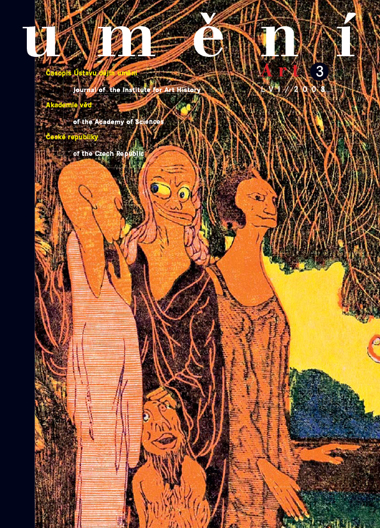Vendula Hnídková
Viděno vlastníma očima. Nález neznámého konceptu autobiografie Pavla Janáka
It would seem that the architect Pavel Janák, his life, his work, and his artistic outlook have already been thoroughly researched, given the great volume of archive resources and the vast amount of primary and secondary literature devoted to him and his work. Nevertheless, a recent discovery of a draft autobiography by Janák has added a somewhat unexpected dimension to the spectrum of available information on the architect, and has done so in two ways. This short draft, dated 7 March 1955, takes a retrospective look at his formative period in the first decades of the 20th century, when Vienna was one of the world's architectural epicentres. In the beginning of the year 1906, Janák won an Alois Turek Scholarship, which would have allowed him to take a study trip to Italy, but he used it first to finance his studies at the Academy in Vienna, and only then fulfilled the terms of the scholarship requiring that he spend a year in Italy. The manuscript of the autobiography provides unique insight into the actual time the young student spent studying at the studio of Otto Wagner and about the character of the approach to architecture practised there. While in conformity with his views expressed in the article "From Modern Architecture to Architecture" Janák maintained a reserved stance towards Wagner's concept of art, his trip south, which he was forced to embark on almost involuntarily in April 1907, was more of a revelation to him. Venice, Padua, Ferrara, Bologna, Florence and Rome offered this perceptive artist a new way of looking at the problems of truth in architecture, creating an architectural and public space, and, last but not least, the use of monuments in open public areas. Janák returned repeatedly to Italy throughout his life, and the inspirations he drew from his visits he reworked and incorporated to varying degrees in his own projects. For this reason, the content of these writings should not be regarded as just a text defined by the times in which it emerged, but rather as extraordinarily open personal testimony.
Full-text in the Digital Library of the Czech Academy of Sciences:
https://kramerius.lib.cas.cz/uuid/uuid:e074bc8f-4815-bcfc-7333-0ff3b719ef08
< back

